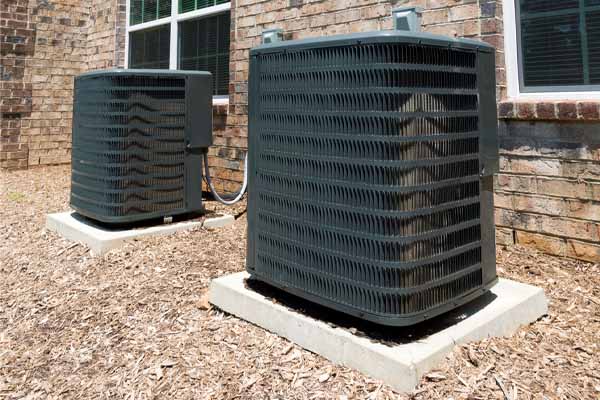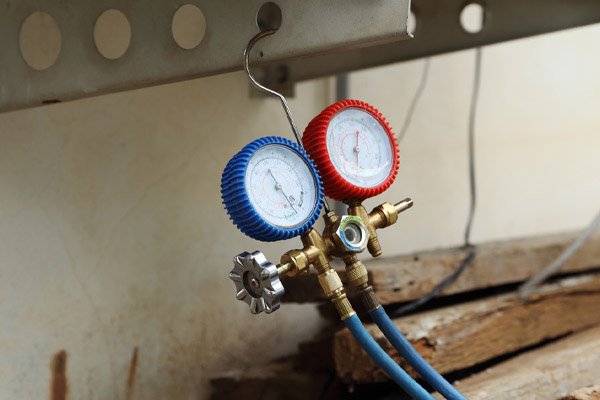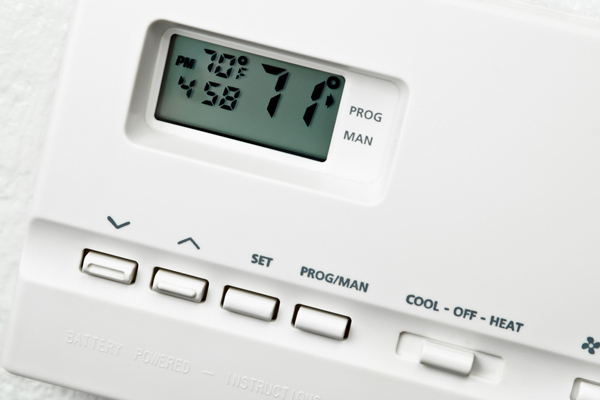How Does My Air Conditioner Work?

For comfort, we usually turn our air conditioners on whenever the house feels hot. With just the push of a few buttons and a slight wait, the indoor living environment becomes significantly cooler. Air conditioning is an excellent form of HVAC technology for making hot summer days infinitely more bearable. It protects us from potentially dangerous, heat-related conditions like heat stroke, and makes it possible to get a good night’s sleep. Early civilizations might consider our ability to control our environment as being downright magical. In truth, however, it’s the smart application of scientific knowledge. Have you ever asked the question, “How does an air conditioner work?”, if so, then keep reading to get the answers you seek.
How An Air Conditioner Cools The Home
Contents
- 1 How An Air Conditioner Cools The Home
- 2 Air Conditioner Components
- 3 The Standard Air Conditioner Cooling Process
- 3.1 Stage One: The Thermostat Signals A Need For Cool Air
- 3.2 Step Two: Heat Is Absorbed By The Refrigerant
- 3.3 Step Three: Cool Air Is Blown Back To The House By The Fans
- 3.4 Step Four: Heat Held By The Refrigerant Is Released Outside
- 3.5 Step Five: Hot Air Is Blown Out By The Fans
- 3.6 Step 6: The Cooled Refrigerant Returns To The Indoor Condenser
- 3.7 Conclusion
- 4 Call Lawes Company For All Your HVAC Needs
This article will share in-depth information on how an air conditioner can keep the indoor environment comfortable and cool all summer long.
Air Conditioner Components
Before we tackle the details on how an air conditioner works, we should start by familiarizing ourselves with its components. We’ll keep this simple by focusing on the four primary components of an air conditioning system and the individual roles they fulfill within the cooling cycle.
1. Air Conditioner Refrigerant

The refrigerant in an air conditioner is actually the lifeblood of the entire system. This chemical solution has the job of carrying heat away from the building. The cooling cycle describes the journey of the refrigerant through various components, and of how the refrigerant changes throughout this journey.
2. Evaporator Coil
The evaporator coil is the primary component within an air conditioner’s indoor unit that absorbs heat by interacting with the interior environment. For optimum performance, this component must be kept clean. Periodic replacement of the air filter helps to this end.
3. Condenser Coil
The condenser coil is the primary component of the outside unit and it interacts with the outdoor environment to release heat. Like evaporator coils, condenser coils are also affected by dirt, dust, and debris. Thus, routine cleaning is important. Before summer rears its head, be sure to have your air conditioner tuned up.
4. Compressor
The compressor is a pump that keeps the refrigerant moving between the evaporator and condenser coils. This is basically the heart of your cooling system.
The Standard Air Conditioner Cooling Process
Stage One: The Thermostat Signals A Need For Cool Air

Let’s begin at the very start. You’ve just arrived home after a hard day on the job. The air conditioner was turned on at a higher temperature while you were gone in an effort to keep your energy costs low. It’s hot and stuffy inside and so you turn your air conditioner up by setting a more desirable indoor temperature at the thermostat. Sensors then check the current indoor temperature. It is recognized as being higher than the temperature that you’ve set at the thermostat. So, the thermostat signals for the cooling cycle to start. This triggers the compressor into action to move the refrigerant throughout the system. The fans also turn on.
Step Two: Heat Is Absorbed By The Refrigerant
The first stop that refrigerant makes along its journey is at the indoor evaporator coils. At this time, the refrigerant is quite cool. Once it gets in contact with the hot air indoors, it will absorb and retain this heat much like a sponge. As the refrigerant heats up, the indoor air becomes noticeably cooler. If there happens to be excessive humidity indoors, the vapor will likely convert to water due to lower temperatures. As such, an air conditioner can also help regulate humidity. There is a collection tray for retaining this moisture and diverting it outdoors so that no indoor leaks or water damages are caused.
Step Three: Cool Air Is Blown Back To The House By The Fans
Cold air is blown around the evaporator coil by the fan, and then back into the house. With central AC systems, this cold air is pushed through the air ducts so that each room has the benefit of uniform cooling. With a multi-split system or a window air conditioner, the fans blow cool air into single zones or rooms. A ductless split system provides everyone in the home the ability to control temperatures throughout specific zones for completely customized cooling. People can simply turn off the inside units in their zones or rooms if they are leaving or simply want to limit their energy use.
Step Four: Heat Held By The Refrigerant Is Released Outside
Refrigerant has limits on its heat retention abilities. Once hot, it has to travel to the outdoor unit to release the heat that it’s collected from the condenser coils at the building interior. As long as the refrigerant is warmer than the outside environment, it can release this heat until it achieves a state of equilibrium.
Step Five: Hot Air Is Blown Out By The Fans
To assist the refrigerant in achieving equilibrium or returning to its cooled state, the air is blown across the condenser coils by powerful fans. This portion of the system expedites the transfer of heat. The surrounding air will become much warmer, which you’ll notice if you place your hand above the outside unit. Given that this component is installed in an open space, the hot air will simply be carried away by the wind. This allows the home to continue releasing heat from inside at the property exterior via the cooling system.
Step 6: The Cooled Refrigerant Returns To The Indoor Condenser
After the refrigerant has cooled back down, it will be pumped back to the indoor unit by the compressor so that the cycle can be repeated. This is an ongoing process that continues until the temperature setting at the thermostat has been reached. The system will then stop for a short rest. When inside temperatures start climbing once more, the air conditioner will begin the cooling process again.
Conclusion
It is plain to see that air conditioners don’t really produce cold air from nothing. Instead, they extract heat from the home little by little until occupants are comfortable. It’s an intelligent design that has been appreciated for many decades now. Some of the latest and most innovative AC models are increasingly pushing the bounds of energy efficiency for both improved comfort and lower consumption.
Call Lawes Company For All Your HVAC Needs

Monmouth and Ocean County, New Jersey locals can rely on Lawes Company to provide affordable, reliable, and competitively priced cooling and heating solutions. Our team is comprised of experienced and highly trained technicians who are adept in performing HVAC installations, repairs, annual tune-ups, and more. Their extensive knowledge and experience ensure that your heating or cooling system service will always be performed correctly.
You can always get the lowest prices on HVAC services when working with Lawes Company. Get more comfort in your home, enjoy improved efficiency, and minimizing your energy bill with our maintenance services. If you’re ready to have your old, outdated HVAC equipment upgraded, let us help you find the best model for your home, and at your ideal price point. You will get a solid guarantee when working with us. For an appointment, get in touch with Lawes Company. Our in-home estimates won’t cost you a thing.
Contact us now at (732) 741-6300 to find out more!